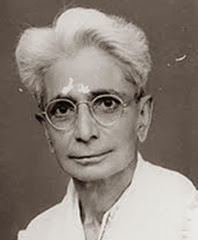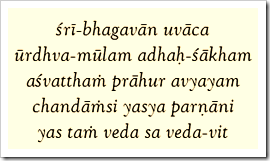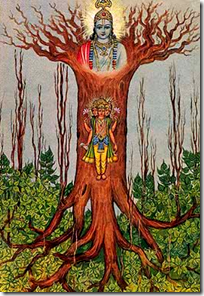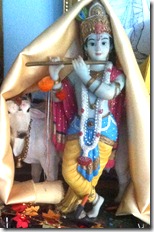தினகரன் தீபாவளி மலர் சிறுகதை - வெண்மையில் எத்தனை நிறங்கள் - கே.என்.சிவராமன்
செல்போன் அதிர்ந்ததுமே புரிந்தது. ராதாதான்.
‘‘சொல்லும்மா...’’
‘‘நீதான்பா சொல்லணும்...’’ குரல் ஒடுங்கியிருந்தது. எதிர்பார்த்ததுதான். தவிப்பை கட்டுப்படுத்த கீழ் உதட்டை கடித்துக் கொண்டிருப்பாள். ரத்தம் பூக்காமல் இருக்க வேண்டும். நிச்சயம் மொட்டை மாடியின் ஓரத்தில் கைப்பிடி சுவரை பிடித்தபடிதான் நின்று கொண்டிருப்பாள். தன் அறையிலிருந்து இப்படி பேச வாய்ப்பில்லை. துவளும் கால்களுக்கு பிடிப்புத் தர எந்தக் காலையாவது அழுத்தமாக ஊன்றியிருப்பாள். மறு கால் குழைந்து நெகிழ்ந்திருக்கும். சுருட்டை முடி பறக்க தென்னங்கீற்றை ஊடுருவும் அதிகாலை சூரியனை வெறித்துக் கொண்டிருப்பாள். செல்போனை ஏந்தியிருப்பது வலது கையா இடது கையா? அது ஊன்றி நிற்கும் காலை பொறுத்தது. ஆனால், கைப்பேசி இல்லாத கை நிச்சயம் இடுப்பை பிடித்துக் கொண்டிருக்கும்.
வலித்தது. தனக்குள் சுருங்கும் வழக்கம் அனுவுக்கு இல்லை. தப்பு. அனுராதாவை எந்தக் காரணம் கொண்டும் ‘அனு’ என சுருக்கக் கூடாது. குண்டு கண்களை அகலமாக விரித்து நொடியில் எரித்து விடுவாள். தாங்க முடியாது.
‘‘லைன்லதானப்பா இருக்க..?’’
‘பா?’ ஆமாம். ‘பா’ என்றுதான் அழைக்கிறாள். உடலும் மனமும் ஒருசேர அதிர்ந்தது. இன்னும் எத்தனை நேரம் தாக்குப் பிடிக்க முடியுமென்று தெரியவில்லை.
‘‘என்னிக்கி உன் அழைப்பை கட் பண்ணியிருக்கேன் சொல்லு..?’’
‘‘க்ருஷ் ப்ளீஸ்...’’
மவுனமாக இருந்தேன்.
‘‘என்ன முடிவுபா எடுத்திருக்க..?’’
‘‘...’’
‘‘உன்னதாம்பா மலைபோல நம்பியிருக்கேன். என் வாழ்க்கையே உன் முடிவுலதான் இருக்கு...’’
சுலபமாக பாரத்தை இறக்கிவிட்டாள். சுமக்கத்தான் முடியவில்லை.
‘‘அனு... அனு...’’ யாரோ அழைக்கும் குரல் மங்கலாக கேட்டது. ‘‘க்ருஷ்... அம்மா வர்றாங்க. அப்புறம் கூப்பிடறேன்...’’
ஒலியும், ஒளியும் மெல்ல மெல்ல அணையும் தருணத்தை செல்ஃபோனில் தரிசித்துக் கொண்டிருந்தேன். இதே போன்ற மொபைல்தான் அவளிடமும் இருக்கிறது. ராயப்பேட்டை அஜந்தா ஹோட்டலுக்கு எதிரிலிருந்த கடையில் ஒரே நேரத்தில் இருவருமாக வாங்கியது. கிரெடிட் கார்டில் தேய்த்தது நான்தான்.
‘‘எதுக்காக எனக்கு இப்ப போன் வாங்கித் தர்ற?’’ கடை வாசலில் புருவத்தை உயர்த்தியபடி கேட்ட ராதாவின் உருவம் இப்போதும் நினைவில் இருக்கிறது.
‘‘நல்ல ஆஃபர்... சான்ஸை மிஸ் பண்ண விரும்பலை...’’
‘‘எந்த சான்ஸ்?’’ நீல ஜீன்சுக்கு மேல் அணிந்திருந்த ப்ரவுன் ஜிப்பாவின் கைகளை மடித்தபடியே கேட்டாள்.
கேள்வி புரிந்தது. ‘‘புரியல...’’ என்றேன்.
‘‘என்னை இம்ப்ரஸ் பண்றியா?’’
‘‘அனு...’’
‘‘கால் மீ அனுராதா ஆர் ராதா...’’
‘‘ஓ.கே. தப்பா பேசாத ராதா...’’
‘‘என்னது... நான் கேட்டது தப்பா?’’ தலையை சிலிப்பியபடி சிரித்தாள். கண்களில் சீற்றம் தெறித்தது. காதுடன் ஒட்டியிருந்த வெள்ளை நிற ஸ்டட் அதிர்ந்தது. ‘‘அப்ப சரியான விடையை நீ சொல்லேன்...’’
‘‘உன்னோட போன் ரொம்ப பழசா இருக்கு...’’
‘‘ம்ஹும்...’’
‘‘டிஸ்ப்ளே சரியா இல்ல...’’
‘‘ம்ஹும்...’’
‘‘அதனால வாங்கிக் கொடுத்தேன்...’’
‘‘நான் கேட்டனா?’’
‘‘என்ன இப்படி கேள்வி மேல கேள்வி கேட்கற? ஒரு ஃபிரெண்டுக்கு வாங்கிக் கொடுத்தேன். தட்ஸ் ஆல்...’’
‘‘ஃபிரெண்ட்?’’ ஜிப்பாவின் காலரை கடித்தபடி தன்னை அடக்கினாள். ‘‘அப்ப மதனுக்கு வாங்கிக் கொடுக்க வேண்டியதுதானே? அவன் போன் இதைவிட கண்றாவியா இருக்கு...’’ என்று தன் பழைய மொபைலை என் முகத்துக்கு நேராக தூக்கிப் பிடித்தாள்.
அக்கம்பக்கத்தில் இருந்தவர்கள் நின்று கவனிக்க ஆரம்பித்தார்கள். திருவான்மியூர் செல்லும் பேருந்தின் ஜன்னல் ஓரம் அமர்ந்திருந்தவர்கள் எட்டிப் பார்த்தார்கள்.
‘‘எல்லாரும் பார்க்கிறாங்க ராதா...’’
‘‘இதை நான் யூஸ் பண்ணினா ஆபீஸே என்னை கேவலமா பார்க்கும். பரவாயில்லையா?’’
ஒரே அலுவலகம். பக்கத்து பக்கத்து இருக்கை. ஒரே மாதிரியான செல்போனை அதுவும் ஒரே நேரத்தில் பயன்படுத்த ஆரம்பித்தால் பேச்சு எழும் என்று பயப்படுகிறாளா?
‘‘ரெண்டு பேரும் தனித்தனியா வாங்கினதா சொல்லலாம்...’’
‘‘அது மத்தவங்களுக்கான பதில். நான் கேட்டது அதில்லை...’’ பற்களை கடித்தாள். விட்டால் சட்டையை பிடித்து உலுக்குவாள் போலிருந்தது.
‘‘இப்ப உனக்கு என்ன வேணும்?’’
‘‘எதுக்காக எனக்கு மொபைல் வாங்கிக் கொடுத்த?’’
‘‘தப்புத்தான். வேணும்னா பணத்தை கொடுத்துடு...’’
‘‘என்கிட்ட அவ்வளவு பணமில்லனு உனக்குத் தெரியும்...’’
‘‘அதனாலத்தான் வாங்கிக் கொடுத்தேன்...’’ சட்டென்று வெளிப்பட்ட பதிலை சிரமப்பட்டு மென்று விழுங்கினேன்.
‘‘ஏன் பேசாம இருக்க?’’
‘‘லுக் ராதா... என் மனசுல தப்பான எந்த எண்ணமும் இல்ல. விருப்பம் இருந்தா யூஸ் பண்ணு...’’
‘‘இல்லைனா?’’
‘‘தூக்கிப் போடு... அதான் ஏற்கனவே இப்படி செய்திருக்கோமே...’’ என்று முகத்தை திருப்பிக் கொண்டேன்.
‘‘சரியான லூசு... வண்டியை எடு...’’ என்று அதட்டினாள்.
இருவரின் கண் முன்னாலும் ஒரே காட்சிதான் விரிந்தது. அது கடந்த தீபாவளி அன்று நடந்தது. நோன்பு, சனி, ஞாயிறு என அடுத்தடுத்து விடுமுறை வந்ததால் தீபாவளிக்கு முந்தைய நாள் இடுப்பு ஒடியும் அளவுக்கு வேலை. ஒருவழியாக அனைத்தையும் முடித்தபோது மணி இரவு பத்து.
இருவருக்குமே அகோர பசி. மயிலாப்பூர் கபாலீஸ்வரர் கோயிலை ஒட்டியிருந்த சரவணபவனில் டிபன் சாப்பிட்டுவிட்டு புறப்பட்ட போது ஸ்வீட் வாங்கலாம் என்று தோன்றியது. ராதாவுக்கு பிடித்த மைசூர்பாகு. விரும்பி சாப்பிடுவாள். அவளுக்கு மட்டும் பேக் செய்யச் சொன்னால் புரட்டி எடுத்து விடுவாள். எனவே இருவர் வீட்டுக்கும் தனித்தனியாக வாங்கினேன். நல்லவேளை குதர்க்கமாக எதுவும் சொல்லவில்லை.
பைக்கை ஸ்டார்ட் செய்தேன். ஒரு பக்கமாக ஏறி அமர்ந்தாள். இரு பக்கம் கால் போட்டு அமர்வது அப்போது அவள் அகராதியிலேயே கிடையாது. கே.கே.நகரை நோக்கி வண்டியை திருப்பினேன்.
‘‘எங்க போற?’’
‘‘உன்னை டிராப் பண்ண...’’
‘‘வேண்டாம்... மடிப்பாக்கத்துல என்னை இறக்கிடு...’’
‘‘என்னது..?’’
‘‘ச்சூ. சொன்னதை செய். கேசவ் எனக்காக காத்திருக்கான்...’’
‘‘இந்த நேரத்துலயா?’’
‘‘ஏன் பத்தரைதானே ஆகுது? அவன் கூட பேசிட்டு கிளம்பறேன். அவன் என்னை டிராப் பண்ணிடுவான்...’’
‘‘வீட்ல தேட மாட்டாங்களா?’’
‘‘நைட் ஷிப்ட் தொடருதுனு சொல்லிட்டேன்...’’
காரணமில்லாமல் கோபம் வந்தது. அதை பைக்கில் காட்டினேன்.
‘‘பார்த்து... பார்த்து... கேசவ் என்னை பார்க்கிறப்ப நான் முழுசா இருக்கணும்...’’ சிரித்தபடி சொன்னாள். அவளது சுருட்டை முடி காற்றில் பறந்து முகத்தை மூடியது. ஒதுக்கினேன். போக்குவரத்தை கடந்து வேளச்சேரியை அடைந்தபோது வண்டியை நிறுத்தச் சொன்னாள்.
‘‘இதுக்கு மேல ஆட்டோல போயிக்கறேன்...’’
சலனமில்லாமல் அவளைப் பார்த்தேன். பிடிவாதமாக பார்வையை எதிர் கொண்டாள். பெருமூச்சுடன் வண்டியின் பாக்சை திறந்து ஸ்வீட் பாக்சை எடுத்தேன்.
‘‘இப்ப வேண்டாம்...’’
‘‘பின்ன?’’
‘‘நாளைக்கு வீட்ல வந்து கொடு...’’
‘‘அம்மாவோட வெளில போறேன்...’’
‘‘எங்க பொண்ணு பார்க்கவா?’’
சிரிப்பு வந்தது. ‘‘இல்ல. காஞ்சிபுரம் கோயிலுக்கு...’’
‘‘சரி, அப்ப நாளை மறுநாள் வீட்டுக்கு வா...’’
‘‘ஏன் இப்ப இதை வாங்கிட்டு போனா என்ன?’’
‘‘கேசவ்க்கு பிடிக்காது...’’
பற்றிக் கொண்டு வந்தது. ‘‘அதனாலதான் இங்கயே இறங்கினியா?’’
‘‘உனக்கு பதில் சொல்லணும்னு அவசியமில்லை...’’
‘‘ரைட். இப்ப இந்த ஸ்வீட்டை வாங்கிப்பியா மாட்டியா?’’
‘‘பைத்தியமா உனக்கு? அதான் நாளை மறுநாள் கொடுனு சொல்றேன்ல...’’
கோபம் வந்தது. அவளுக்கும், எனக்குமாக வாங்கிய இரு ஸ்வீட் பாக்சையும் வீசி எறிந்தேன். ‘தொப்’ என்று அவைகள் சாக்கடையில் போய் விழுந்தன.
‘‘க்ருஷ்...’’ அவள் அழைக்க அழைக்க திரும்பிப் பார்க்காமல் பைக்கில் பறந்தேன்.
அந்த நினைவுகளை எப்போது அசை போட்டாலும் மனம் நடுங்கும். அன்றும் அதிர்ந்தது.
‘‘இத்துப் போன ரீலுல ப்ளாஷ்பேக் ஓட்டி முட்டிசுட்டியா?’’ செல்போன் பாக்சை தன் ஹேண்ட்பேக்கில் வைத்தபடியே கேட்டாள். கண்ணோரம் அவள் சிரிப்பது அப்பட்டமாக தெரிந்தது. ‘‘அதே விஷூவலை நானும் பார்த்து முடிச்சிட்டேன். இப்ப திருப்திதானே?’’
‘‘ராட்சஷி... இதுக்கு நீ பேசாம நான் கொடுத்ததும் செல்போனை வாங்கியிருக்கலாமே...’’
‘‘எதுக்கு? அநாவசியமான கற்பனைக்கு வழி வகுக்கவா?’’
‘‘நாக்குக்கு பதிலா சாட்டைத்தான் இருக்கு... எப்படி விளாசற..?’’
‘‘சந்தோஷம். காயத்துக்கு மருந்து போட கூப்பிடாத...’’ என்றபடி ஏறி அமர்ந்தாள். ம்ஹும். ஒரு பக்கமாக அல்ல. இரு பக்கமும் கால்களை போட்டு என் முதுகைப் பிடித்தபடி அமர்ந்தாள்.
இப்படி அவள் அமரக் காரணம் ரேகாதான். அனுரேகா. ராதாவின் அக்கா. இருவருக்கும் ஒரு வயதுதான் வித்தியாசம். ஹோம் எக்ஸிபீஷன் நடப்பதாக அறிந்ததை அடுத்து ஒருமுறை நந்தம்பாக்கம் டிரேட் சென்டருக்கு சென்றிருந்தோம். சொந்த வீடு வாங்கும் கனவு பொங்கி வழிந்த நேரம் அது. கேசவனின் பைக்கில் ராதா அமர, ரேகா என் வண்டியில் ஏறினாள். சொல்லப் போனால் ரேகா முதன் முதலில் என் வண்டியில் ஏறியது அப்போதுதான். ஒரு பக்கமாக அமர்வாள் என்று எதிர்பார்க்க இரண்டு பக்கமும் கால்களை போட்டு அமர்ந்தாள்.
என்னை விட ராதாவுக்குத்தான் இதில் வியப்பு அதிகம். ‘‘ரேகா அப்படி உட்காருவான்னு நினைச்சுக் கூட பார்க்கல... ஆனா, சந்தோஷமா இருக்கு...’’ என்றபடி மறுநாள் முதல் ராதாவும் என் வண்டியில் அமரும்போது இரு பக்கமும் கால்களைப் போட்டு அமர ஆரம்பித்தாள்.
சொந்த வீடு வாங்கும் கனவு கடைசியில் எனக்கு குரோம்பேட்டையில்தான் நிறைவேறியது. கேசவன், மடிப்பாக்கத்தில் வீடு வாங்கினான். ‘‘அதான் நீயும் கேசவனும் வீடு வாங்கிட்டீங்கல... அதுபோதும்...’’ என ராதா கண்ணடித்தாள்.
இந்த வாக்கியத்தை இடம் சுட்டி எப்படி பொருள் கொள்வது என்று தெரியாமல் எப்போதும்போல் அன்றும் விழித்தேன். சந்தேகத்தை வாய்விட்டு கேட்கவும் முடியாது. வார்த்தைகளால் சுளுக்கெடுத்து விடுவாள்.
அலுவலகத்துக்கு வந்து தன் நாற்காலியில் அமர்ந்ததும் என்னைப் போலவே பழைய செல்போனில் இருந்த சிம்கார்டை எடுத்து புதிய போனில் செருகினாள். சார்ஜ் ஏற்றினாள். அலுவலகத்தில் இருந்தவர்கள் எங்கள் இருவரின் கைகளிலும் இருந்த கைப்பேசியை மாறி மாறி பார்த்தார்கள். புருவத்தை உயர்த்தினார்கள். நமுட்டு சிரிப்பு சிரித்தார்கள்.
இன்டர்கேம் ஒலித்தது. ராதாதான். ‘‘இப்ப சந்தோஷமா? இதுக்குத்தான ஆசைப்பட்ட..? முட்டாள்...’’ என்று குதறியபோதும் புதிய செல்போனைத்தான் அதன் பிறகு பயன்படுத்தினாள்.
கேசவன் முன்னால் என்ன செய்வாள் என்று ஏனோ மனம் பரபரத்தது. அதற்கான விடையும் மறுநாளே கிடைத்தது.
பழைய மகாபலிபுரம் சாலையில் இருக்கும் சாப்ட்வேர் நிறுவனத்தில் கேசவன் பணிபுரிகிறான். பொது நண்பர்கள் மூலமாக பொதுவாக ராதாவுக்கு பழக்கமாகி அவள் மூலமாக எனக்கு அறிமுகமானவன். தன் அக்கா பையனின் பிறந்தநாள் விழாவுக்கு அழைத்திருந்தான். என்னையல்ல. ராதாவை. ஆனால், எனக்கும் அழைப்பு இருப்பதாகச் சொல்லி வலுக்கட்டாயமாக கூட்டிச் சென்றாள். இருவரின் கைகளிலும் ஒரே மாதிரியாக இருந்த போனை பார்த்த கேசவனின் கண்கள் சுருங்கின.
‘‘கேசவ்கிட்ட என்ன சொன்னே?’’ திரும்பும்போது கேட்டேன்.
‘‘என்ன விஷயமா?’’
‘‘செல்போன் விஷயமா...’’
‘‘அது கேசவுக்கு நான் சொன்ன பதில். அதை தெரிஞ்சுகிட்டு நீ என்ன பண்ணப் போறே?’’ குண்டு கண்களை இன்னும் குண்டாக விரித்தாள்.
இந்த குண்டு கண்கள்தான் என்னை ஈர்த்ததா அல்லது எந்த கண்டிஷனர் ஷாம்பூவுக்கும் அடங்காமல் புஸ் என்று எந்நேரமும் பறந்துக் கொண்டிருக்கும் சுருட்டை முடியா? தெரியவில்லை. ஆனால், ஐந்தரை அடி உயரத்தில் ஜீன்ஸ் அணிந்தால் சணல் கயிற்றால் இறுக்கிக் கட்டிய மூட்டைப் போன்ற உடல்வாகும், சுடிதார் அணிந்தால் சற்றே தளர்வாக தெரியக் கூடிய தோற்றமுமாக முதல் பார்வையிலேயே ராதா முழுவதுமாக வசீகரித்தது உண்மை.
டிரெய்னிங் முடித்திருந்த அவளை எனது டீமில்தான் இணைத்தார்கள்.
‘‘உங்க டீம் லீடர்... கிருஷ்ணன்...’’ என்று எச்.ஆர்., அறிமுகப்படுத்தியபோது தயக்கமின்றி ‘‘ஹலோ க்ருஷ்...’’ என்றாள். கிட்டத்தட்ட பன்னிரெண்டு வயது மூத்தவன். ‘‘சார்...’’ என்ற அழைப்பைத்தான் எதிர்பார்த்தேன். ஒருவேளை முதல் சந்திப்பிலேயே பெயர் சொல்லி கூப்பிட்டது கூட சிநேகத்தை வளர்த்திருக்கலாம். காரணம் தெரியாதபோதும் நட்பு வளர்ந்தது உண்மை. பேருந்து அல்லது ஷேர் ஆட்டோவில் பிதுங்கி வருபவளைப் பார்க்க பாவமாக இருந்தது.
‘‘டூ வீலர் வாங்கிக்கலாமே?’’
‘‘இப்போதைக்கு சாத்தியமில்ல...’’ என்றவளை அதன் பிறகு துருவவில்லை. வீட்டில் சம்பாதிக்கும் ஒரே ஜீவன். அம்மாவுக்கு உடம்பு முடியவில்லை. அக்கா டிகிரி முடித்துவிட்டு வீட்டை பார்த்துக் கொள்கிறாள். தம்பி அப்போதுதான் ப்ளஸ் டூ. சம்பளமும் அவ்வளவு ஒன்றும் அதிகமில்லை.
எனவே இயல்பாகவே ராதாவுக்கு டிரைவர் ஆனேன். அலுவலகத்தில் மற்ற ஆண்களின் பைக்கில் அவள் ஏறி பார்த்ததில்லை. நான் அல்லது கேசவன். இருவரைத் தவிர வேறு சாரதி அவளுக்கில்லை. எங்கு போவதென்றாலும் பெரும்பாலும் என்னைத்தான் அழைப்பாள்.
அப்படித்தான் ஒரு ஞாயிற்றுக்கிழமை செல்லில் கூப்பிட்டாள். பயிற்சிக் காலத்தில் அவளுக்கு பழக்கமான இஸ்மாயிலுக்கு குழந்தை பிறந்திருந்தது.
‘‘எண்ணூர் போகணும்...’’
‘‘கீழ இறங்கி வா...’’
‘‘வாட்?’’
‘‘உன் வீட்டு வாசல்லதான் இருக்கேன்...’’
கரும்பச்சை நிற நைட்டியுடன் எட்டிப் பார்த்தவள் தன்னையும் அறியாமல் ‘‘அடப்பாவி...’’ என்றாள்.
‘‘நேத்து இஸ்மாயில் உனக்கு தகவல் சொன்னப்பவே நீ கூப்பிடுவேன்னு எதிர்பார்த்தேன்...’’
‘‘ஒட்டு கேட்டியா?’’
‘‘இல்ல. நீ பேசினது காதுல விழுந்தது...’’
‘‘பத்தே நிமிஷம்...’’
சொன்னபடி அடுத்த அறுநூறாவது நொடியில் வந்தாள். உச்சி வெயிலில் கே.கே.நகரில் இருந்து எண்ணூர் செல்வதற்குள் தாவு தீர்ந்துவிட்டது. மருத்துவமனையில் இஸ்மாயிலின் குழந்தையை தூக்கவே ராதா அஞ்சினாள். ‘‘ஏம்மா, நாளைக்கே உனக்கு குழந்தை பிறந்தா என்ன செய்வ?’’ என்று நர்ஸ் கிண்டலடித்தபோது ராதாவின் முகம் சிவந்தது. உதடுகள் அதிர சிரித்து சமாளித்தவள், ‘‘பாரு கிருஷ் இந்த நர்ஸ் சொல்றதை...’’ என்று காதில் முணுமுணுத்தாள்.
குப்பென்று வியர்த்தது. இருப்புக் கொள்ளாமல் நாற்காலியில் அசைந்தேன். தயக்கத்துடன் குழந்தையின் அருகில் சென்ற ராதா, முதலில் அதன் சருமத்தை தொட்டுப் பார்த்தாள். எப்படி தூக்க வேண்டும் என்று இஸ்மாயிலின் அப்பா கற்றுத் தர அதை அப்படியே கடைப்பிடித்தாள். அதன் பிறகு கிளம்பும் வரை குழந்தையை தன் மடியை விட்டு ராதா இறக்கவேயில்லை.மருத்துவமனையை விட்டு வெளியே வந்தபோது அவள் செல் ஒலித்தது. இனம் புரியாத உணர்வு மனதை ஆக்கிரமிக்க வண்டியை ஸ்டார்ட் செய்தேன். இரு பக்கமும் கால்களைப் போட்டு அமர்ந்தவள், என் காதுக்கருகில் குனிந்தாள்.
‘‘இப்படிக் கூட அப்பா இருப்பாங்களா?’’
அமைதியாக இருந்தேன்.
‘‘அன்பான அப்பா கிடைச்சவங்க பாக்கியசாலிங்க இல்லையா?’’
நதியின் ஆழம் முகத்தில் அறைந்தது.
‘‘பீச் போயிட்டு போகலாமா?’’
வண்டியை பேலன்ஸ் செய்தேன். இல்லாவிட்டால் இருவருமே விழுந்திருப்போம்.
‘‘மெரீனா வேண்டாம். எலியட்ஸ் போகலாம்...’’ என்றபடி தன் முடியை கொத்தாகப் பிடித்து ரப்பர் பேண்ட்டை மாட்டினாள்.
நம்ப முடியவில்லை. சென்னை முழுக்க என்னுடன் நகர்வலம் வருபவள், ஒருபோதும் கடற்கரைக்கு வந்ததில்லை. சீக்கிரமே வேலை முடிந்த ஒருநாள் ‘‘பீச்’’ போகலாமா என்று கேட்டதற்கு, ‘‘எதுக்கு? இருட்டுல தடவ திட்டம் போட்டிருக்கியா?’’ என்று கொதிக்கும் தணலை தலையில் கவிழ்த்திருக்கிறாள்.
பெசன்ட்நகர் பீச்சை அடைந்தபோது மாலை சூரியன் குளிர்ச்சியை தூவிக் கொண்டிருந்தான்.
வண்டியை ஸ்டாண்ட் போட்டேன்.
‘‘க்ருஷ்...’’ சீட்டை நோண்டியபடியே பார்த்தாள்.
‘‘சொல்லு...’’
‘‘நீ கிளம்பிடு...’’ என்றபடி பார்வையை திருப்பினாள். பெரிதாக எழுந்த அலை ஆர்ப்பாட்டத்துடன் கரையை தொட்டது.
‘‘கேசவ் வர்றான்... அவன் என்னை டிராப் பண்ணிடுவான்...’’ பதிலை எதிர்பார்க்காமல் மணலில் நடக்க ஆரம்பித்தாள்.
மறுநாள் அலுவலகத்துக்கு செல்லவில்லை. ‘டிரைவருக்காக காத்திருக்க வேண்டாம்’ என ராதாவுக்கு மெசேஜ் அனுப்பினேன். மதியம் போல் வீட்டு காலிங்பெல் ஒலித்தது. ராதாதான்.
‘‘அம்மா இல்ல?’’
‘‘ஊருக்கு போயிருக்காங்க...’’
ஹால் சுவரில் மாலையுடன் காட்சித் தந்த அப்பாவின் புகைப்படத்தை கொஞ்ச நேரம் பார்த்தாள்.
‘‘சாப்பாடு?’’
‘‘சமைச்சிருக்கேன்...’’
நேராக சமையல் அறைக்கு சென்று மூடியைத் திறந்து பார்த்தாள்.
‘‘பட்டினி கிடப்பேன்னு நினைச்சியா?’’ அவளைப் பார்த்தபடி கேட்டேன்.
‘‘உன் வயிறு. உன் பசி. எப்படியிருந்தா எனக்கென்ன?’’ வழக்கம்போல் புருவம் உயர வார்த்தைகளை விட்டவள், அங்கிருந்த தட்டை எடுத்தாள்.
‘‘உன்னோட தட்டா?’’ பதிலை எதிர்பார்க்காமல் அதில் சோற்றை போட்டாள். சாம்பாரை ஊற்றினாள். ஹாலுக்கு வந்து சோபாவில் அமர்ந்தபடி சாப்பிட ஆரம்பித்தாள்.
‘‘ரேகா போலவே நல்லா சமைக்கிற...’’ சாப்பிட்டு முடித்துவிட்டு தட்டை கழுவினாள். ஃபிரிட்ஜை திறந்து தண்ணீர் பாட்டிலை எடுத்தாள்.
‘‘எதுக்காக இன்னிக்கி லீவ்?’’
பதில் சொல்லாமல் அவளையே பார்த்தேன். அழுத்தக்காரி. பார்வையை விலக்காமல் எதிர்கொண்டாள். கடைசியில் நான்தான் கண்களை விலக்கும்படி ஆயிற்று.
‘‘நைட்டெல்லாம் தூங்கல.... கண் எரியுது. கொஞ்சம் நேரம் படுக்கறேன்...’’ என்றபடி பெட்ரூம் சென்றாள்.
அறைய வேண்டும் போல் தோன்றியது. ஒன்று, இரண்டு, மூன்று... என நூறு வரை எண்ணினேன். சோபாவை விட்டு எழுந்து ஹாலில் குறுக்கும் நெடுக்குமாக நடந்தேன். முடியவில்லை. சட்டென்று படுக்கையறைக்குள் நுழைந்தேன். ஏசியின் உறுமல் சீராக ஒலிக்க எனக்கு முதுகை காட்டியபடி கட்டிலில் கால்களை குறுக்கி படுத்திருந்தாள். கதவை மூடிவிட்டு அவளையே பார்த்தேன். திரும்பவேயில்லை. மெல்ல நடந்து அருகில் சென்றேன். அசைவில்லை. போர்வையை எடுத்துப் போர்த்தினேன்.
‘‘டீசண்ட்டா பிஹேவ் பண்ணறதா நினைப்பா?’’ திரும்பாமல் கேட்டாள்.
‘‘அப்படி நீ நினைச்சா அதுக்கு நான் ஒண்ணும் பண்ண முடியாது...’’
‘‘என்ன பழிக்குப் பழியா?’’ சீறலுடன் திரும்பியவளின் கண்கள் கலங்கியிருந்தன.
‘‘அனு...’’
‘‘ஷட் அப். கால் மீ ராதா...’’ கன்னத்தில் வழிந்த கண்ணீரை துடைக்காமல் வெறித்தாள்.
‘‘தூங்கும்போது மாரைத் தொட மாட்டியே?’’
‘‘என்னது..?’’ பூமி பிளந்தது.
‘‘அப்படினா சரி. கதவை மூடிட்டு போ. கொஞ்ச நேரம் நான் தூங்கணும்...’’ என்றவள் போர்வையை தலைவரை போர்த்திக் கொண்டாள்.
அங்கு நிற்கவே பிடிக்கவில்லை. ஹாலுக்கு வந்தேன். டிவி பார்த்தேன். புத்தகம் படித்தேன். பாட்டு கேட்டேன். பால்கனியின் நின்றபடி சிகரெட் பிடித்தேன். உள்ளம் மட்டும் கொதித்துக் கொண்டேயிருந்தது.
மூன்று மணிநேரங்களுக்குப் பின் படுக்கையறையை விட்டு வெளியே வந்தாள். ‘‘காபி குடிச்சியா?’’ பதிலை எதிர்பார்க்காமல் சமையலறைக்கு சென்றாள். ‘‘பாலை காய்ச்சலை?’’ கேட்டவள் ஃபிரிட்ஜை திறந்து பால் பாக்கெட்டை எடுத்தாள். பாத்திரத்தில் ஊற்றி கேஸை பற்ற வைத்தாள். ஹாலுக்கு வந்தவள் எதுவும் பேசாமல் சோபாவில் என்னருகில் அமர்ந்தாள். அவள் பக்கம் திரும்பாமலேயே இருந்தேன். சட்டென்று என் மடியில் படுத்து அழ ஆரம்பித்தாள்.
‘‘ராதா...’’
‘‘சரியா தூங்கி ஏழு வருஷமாகுது க்ருஷ்...’’
‘‘...’’
‘‘எங்க என்னை மீறி தூங்கும்போது யாராவது மாரை பிடிச்சிடுவாங்களோன்னு பயம்...’’
‘‘ராதா...’’
‘‘எங்க சித்தப்பா அப்படித்தான் செஞ்சாரு க்ருஷ்... அப்ப எனக்கு வயசு பதிமூணு...’’
நரம்புகளை சுண்டியது போல் தவித்தேன். என்ன சொல்வதென்று தெரியவில்லை. மெல்ல அவள் முதுகை தட்டிக் கொடுத்தேன்.
‘‘உங்க சித்தப்பா உன்னை ‘அனு’னு கூப்பிடுவாரா?’’
‘‘ம்... ஏன் கேட்கற?’’
‘‘ஒண்ணுமில்ல... மேல சொல்லு...’’
‘‘அப்பா இல்லாம எவ்வளவு கஷ்டப்பட்டோம் தெரியுமா? பல கஷ்டங்களை பொறுத்துகிட்ட அம்மாவால எனக்கு நடந்த கொடுமையை தாங்கிக்க முடியல. சித்தப்பா வீட்டை விட்டு வெளில வந்தோம். படிச்சுகிட்டே வேலை பார்த்தேன். அக்காவுக்கு விவரம் பத்தாது. தம்பி ரொம்ப சின்னப் பையன். ஒவ்வொரு நாள் நைட்டும் சாஞ்சுக்க தோள் கிடைச்சா எவ்வளவு நல்லா இருக்கும்னு யோசிப்பேன்...’’ தன் போக்கில் தொடர்ந்து பேசினாள்.
‘‘ரிலாக்ஸ் ராதா...’’
‘‘பால் பொங்கப் போகுதுனு நினைக்கறேன்...’’ கொண்டை போட்டபடியே சமையலறைக்கு சென்றாள். ஐந்து நிமிடங்களுக்கு பின் இரு டம்ளர்களில் காபியுடன் வந்தாள். ஒன்றை என் கையில் திணித்துவிட்டு என்னருகிலேயே அமர்ந்தாள். இது போல் இதற்கு முன்பு அவள் நெகிழ்ந்ததுமில்லை. ஈஷிக் கொண்டு அமர்ந்ததுமில்லை. ஆதரவாக தலையை தடவினேன்.
‘‘தொடாத...’’ சீறினாள். ‘‘இடத்தை கொடுத்தா மடத்தை பிடிப்பீங்களே...’’ குண்டு கண்களால் எரித்தாள். பழைய ராதா. வாய்விட்டு சிரித்தேன். பதிலுக்கு அழுது கொண்டே சிரித்தாள்.
‘‘ரொம்ப வருஷங்களுக்கு பிறகு இன்னிக்கிதான் என்னை மறந்து தூங்கியிருக்கேன். அதுவும் பகல்ல... ரொம்ப தேங்க்ஸ்...’’ என்றவள் குடித்த காபி கோப்பையை மேஜை மீது வைத்துவிட்டு செருப்பை மாட்டினாள். படீரென்று கதவை திறந்துக் கொண்டு வெளியேறினாள்.
மறுநாளில் இருந்து வழக்கம்போல் சாரதி பணியை தொடர்ந்தேன். மேற்கொண்டு அவள் வாழ்க்கை குறித்து நானும் கேட்கவில்லை. அவளும் சொல்லவில்லை. ஆனால், சாட்டையின் நுனியை மட்டும் தினமும் சாணம் தீட்டினாள். வார்த்தைகளால் சுண்டி சுண்டி அடித்தாள்.
இதற்கெல்லாம் சிகரம் நேற்றிரவு நடந்தது. அலுவலகத்தில் எதுவும் சொல்லாதவள், ‘‘மண்டைக்குள்ள என்னவோ குடையறா மாதிரி இருக்கே...’’ என்று கேட்டபோதும் வாயே திறக்காதவள், தன் வீட்டு வாசலில் இறங்கிய பிறகு அந்த விஷயத்தை சொன்னாள்.
‘‘எங்கக்காவை கல்யாணம் பண்ணிக்கறியா க்ருஷ்?’’
‘‘விளையாடறதுக்கு ஒரு அளவிருக்கு ராதா...’’
‘‘நான் சீரியஸா கேட்கறேன்...’’
‘‘அதனாலத்தான் கண்றாவியா இருக்கு...’’
‘‘உளறாத...’’
‘‘முட்டாள்தனமா பேசறது நீதான்... நான் எப்படி உங்கக்காவை கல்யாணம் செஞ்சுக்க முடியும்?’’
‘‘ஏன் முடியாது..?’’
‘‘பிகாஸ் ஐ லவ் யூ... அது உனக்கே தெரியும்...’’
‘‘ப்ளீஸ் க்ருஷ்...’’ பெருமூச்சுகளால் தன்னை சமன்படுத்திக் கொண்டவள், ‘‘அந்த ஆசையை விட்டுடு...’’ என்றாள்.
‘‘ஏன்?’’
‘‘ஏன்னா எனக்கு ஏற்கனவே கல்யாணம் ஆகிடுச்சு...’’
‘‘வாட்..?’’
‘‘ரிஜிஸ்டர் மேரேஜ். போன தீபாவளி எனக்கு தலை தீபாவளி. நடுரோட்ல பதினொரு மணிக்கு வெறும் வாழ்த்து சொல்லிட்டு பிரிஞ்சோம்...’’
‘‘கேசவனா?’’
‘‘ஆமா. தினமும் வெந்து வெந்து சாம்பலாகறேன் க்ருஷ்... எங்கக்காவுக்கு ஒரு நல்ல வாழ்க்கை அமைச்சுத் தராம என்னால எப்படி வாழ முடியும் சொல்லு...’’
‘‘ராதா... அதுக்காக...’’
‘‘என் வீடு தவிர என்னால நிம்மதியா உன் ரூம்லதான் தூங்க முடியும். எங்கக்காவை நீ கட்டிகிட்டா ‘மாமா வீடு’னு உரிமையோட நான் வருவேன்... தங்குவேன்...’’
‘‘ராதா...’’
‘‘அம்மா வர்றாங்க...மார்னிங் கால் பண்ணறேன்...’’
சொன்னபடியே காலையில் அழைத்து விட்டாள். மீண்டும் அழைக்கவும் போகிறாள்.
தட்டுப்பட்ட நதியின் ஆழத்தில் யோசனையுடன் நடந்தபோது ஒலியுடன் செல்போன் ஒளிர்ந்தது. ராதாதான்.
‘‘என்ன முடிவுபா எடுத்திருக்க..?’’
பதிலை சொன்னேன்.
----------
ஓவியம்: ராஜா

‘‘சொல்லும்மா...’’
‘‘நீதான்பா சொல்லணும்...’’ குரல் ஒடுங்கியிருந்தது. எதிர்பார்த்ததுதான். தவிப்பை கட்டுப்படுத்த கீழ் உதட்டை கடித்துக் கொண்டிருப்பாள். ரத்தம் பூக்காமல் இருக்க வேண்டும். நிச்சயம் மொட்டை மாடியின் ஓரத்தில் கைப்பிடி சுவரை பிடித்தபடிதான் நின்று கொண்டிருப்பாள். தன் அறையிலிருந்து இப்படி பேச வாய்ப்பில்லை. துவளும் கால்களுக்கு பிடிப்புத் தர எந்தக் காலையாவது அழுத்தமாக ஊன்றியிருப்பாள். மறு கால் குழைந்து நெகிழ்ந்திருக்கும். சுருட்டை முடி பறக்க தென்னங்கீற்றை ஊடுருவும் அதிகாலை சூரியனை வெறித்துக் கொண்டிருப்பாள். செல்போனை ஏந்தியிருப்பது வலது கையா இடது கையா? அது ஊன்றி நிற்கும் காலை பொறுத்தது. ஆனால், கைப்பேசி இல்லாத கை நிச்சயம் இடுப்பை பிடித்துக் கொண்டிருக்கும்.
வலித்தது. தனக்குள் சுருங்கும் வழக்கம் அனுவுக்கு இல்லை. தப்பு. அனுராதாவை எந்தக் காரணம் கொண்டும் ‘அனு’ என சுருக்கக் கூடாது. குண்டு கண்களை அகலமாக விரித்து நொடியில் எரித்து விடுவாள். தாங்க முடியாது.
‘‘லைன்லதானப்பா இருக்க..?’’
‘பா?’ ஆமாம். ‘பா’ என்றுதான் அழைக்கிறாள். உடலும் மனமும் ஒருசேர அதிர்ந்தது. இன்னும் எத்தனை நேரம் தாக்குப் பிடிக்க முடியுமென்று தெரியவில்லை.
‘‘என்னிக்கி உன் அழைப்பை கட் பண்ணியிருக்கேன் சொல்லு..?’’
‘‘க்ருஷ் ப்ளீஸ்...’’
மவுனமாக இருந்தேன்.
‘‘என்ன முடிவுபா எடுத்திருக்க..?’’
‘‘...’’
‘‘உன்னதாம்பா மலைபோல நம்பியிருக்கேன். என் வாழ்க்கையே உன் முடிவுலதான் இருக்கு...’’
சுலபமாக பாரத்தை இறக்கிவிட்டாள். சுமக்கத்தான் முடியவில்லை.
‘‘அனு... அனு...’’ யாரோ அழைக்கும் குரல் மங்கலாக கேட்டது. ‘‘க்ருஷ்... அம்மா வர்றாங்க. அப்புறம் கூப்பிடறேன்...’’
ஒலியும், ஒளியும் மெல்ல மெல்ல அணையும் தருணத்தை செல்ஃபோனில் தரிசித்துக் கொண்டிருந்தேன். இதே போன்ற மொபைல்தான் அவளிடமும் இருக்கிறது. ராயப்பேட்டை அஜந்தா ஹோட்டலுக்கு எதிரிலிருந்த கடையில் ஒரே நேரத்தில் இருவருமாக வாங்கியது. கிரெடிட் கார்டில் தேய்த்தது நான்தான்.
‘‘எதுக்காக எனக்கு இப்ப போன் வாங்கித் தர்ற?’’ கடை வாசலில் புருவத்தை உயர்த்தியபடி கேட்ட ராதாவின் உருவம் இப்போதும் நினைவில் இருக்கிறது.
‘‘நல்ல ஆஃபர்... சான்ஸை மிஸ் பண்ண விரும்பலை...’’
‘‘எந்த சான்ஸ்?’’ நீல ஜீன்சுக்கு மேல் அணிந்திருந்த ப்ரவுன் ஜிப்பாவின் கைகளை மடித்தபடியே கேட்டாள்.
கேள்வி புரிந்தது. ‘‘புரியல...’’ என்றேன்.
‘‘என்னை இம்ப்ரஸ் பண்றியா?’’
‘‘அனு...’’
‘‘கால் மீ அனுராதா ஆர் ராதா...’’
‘‘ஓ.கே. தப்பா பேசாத ராதா...’’
‘‘என்னது... நான் கேட்டது தப்பா?’’ தலையை சிலிப்பியபடி சிரித்தாள். கண்களில் சீற்றம் தெறித்தது. காதுடன் ஒட்டியிருந்த வெள்ளை நிற ஸ்டட் அதிர்ந்தது. ‘‘அப்ப சரியான விடையை நீ சொல்லேன்...’’
‘‘உன்னோட போன் ரொம்ப பழசா இருக்கு...’’
‘‘ம்ஹும்...’’
‘‘டிஸ்ப்ளே சரியா இல்ல...’’
‘‘ம்ஹும்...’’
‘‘அதனால வாங்கிக் கொடுத்தேன்...’’
‘‘நான் கேட்டனா?’’
‘‘என்ன இப்படி கேள்வி மேல கேள்வி கேட்கற? ஒரு ஃபிரெண்டுக்கு வாங்கிக் கொடுத்தேன். தட்ஸ் ஆல்...’’
‘‘ஃபிரெண்ட்?’’ ஜிப்பாவின் காலரை கடித்தபடி தன்னை அடக்கினாள். ‘‘அப்ப மதனுக்கு வாங்கிக் கொடுக்க வேண்டியதுதானே? அவன் போன் இதைவிட கண்றாவியா இருக்கு...’’ என்று தன் பழைய மொபைலை என் முகத்துக்கு நேராக தூக்கிப் பிடித்தாள்.
அக்கம்பக்கத்தில் இருந்தவர்கள் நின்று கவனிக்க ஆரம்பித்தார்கள். திருவான்மியூர் செல்லும் பேருந்தின் ஜன்னல் ஓரம் அமர்ந்திருந்தவர்கள் எட்டிப் பார்த்தார்கள்.
‘‘எல்லாரும் பார்க்கிறாங்க ராதா...’’
‘‘இதை நான் யூஸ் பண்ணினா ஆபீஸே என்னை கேவலமா பார்க்கும். பரவாயில்லையா?’’
ஒரே அலுவலகம். பக்கத்து பக்கத்து இருக்கை. ஒரே மாதிரியான செல்போனை அதுவும் ஒரே நேரத்தில் பயன்படுத்த ஆரம்பித்தால் பேச்சு எழும் என்று பயப்படுகிறாளா?
‘‘ரெண்டு பேரும் தனித்தனியா வாங்கினதா சொல்லலாம்...’’
‘‘அது மத்தவங்களுக்கான பதில். நான் கேட்டது அதில்லை...’’ பற்களை கடித்தாள். விட்டால் சட்டையை பிடித்து உலுக்குவாள் போலிருந்தது.
‘‘இப்ப உனக்கு என்ன வேணும்?’’
‘‘எதுக்காக எனக்கு மொபைல் வாங்கிக் கொடுத்த?’’
‘‘தப்புத்தான். வேணும்னா பணத்தை கொடுத்துடு...’’
‘‘என்கிட்ட அவ்வளவு பணமில்லனு உனக்குத் தெரியும்...’’
‘‘அதனாலத்தான் வாங்கிக் கொடுத்தேன்...’’ சட்டென்று வெளிப்பட்ட பதிலை சிரமப்பட்டு மென்று விழுங்கினேன்.
‘‘ஏன் பேசாம இருக்க?’’
‘‘லுக் ராதா... என் மனசுல தப்பான எந்த எண்ணமும் இல்ல. விருப்பம் இருந்தா யூஸ் பண்ணு...’’
‘‘இல்லைனா?’’
‘‘தூக்கிப் போடு... அதான் ஏற்கனவே இப்படி செய்திருக்கோமே...’’ என்று முகத்தை திருப்பிக் கொண்டேன்.
‘‘சரியான லூசு... வண்டியை எடு...’’ என்று அதட்டினாள்.
இருவரின் கண் முன்னாலும் ஒரே காட்சிதான் விரிந்தது. அது கடந்த தீபாவளி அன்று நடந்தது. நோன்பு, சனி, ஞாயிறு என அடுத்தடுத்து விடுமுறை வந்ததால் தீபாவளிக்கு முந்தைய நாள் இடுப்பு ஒடியும் அளவுக்கு வேலை. ஒருவழியாக அனைத்தையும் முடித்தபோது மணி இரவு பத்து.
இருவருக்குமே அகோர பசி. மயிலாப்பூர் கபாலீஸ்வரர் கோயிலை ஒட்டியிருந்த சரவணபவனில் டிபன் சாப்பிட்டுவிட்டு புறப்பட்ட போது ஸ்வீட் வாங்கலாம் என்று தோன்றியது. ராதாவுக்கு பிடித்த மைசூர்பாகு. விரும்பி சாப்பிடுவாள். அவளுக்கு மட்டும் பேக் செய்யச் சொன்னால் புரட்டி எடுத்து விடுவாள். எனவே இருவர் வீட்டுக்கும் தனித்தனியாக வாங்கினேன். நல்லவேளை குதர்க்கமாக எதுவும் சொல்லவில்லை.
பைக்கை ஸ்டார்ட் செய்தேன். ஒரு பக்கமாக ஏறி அமர்ந்தாள். இரு பக்கம் கால் போட்டு அமர்வது அப்போது அவள் அகராதியிலேயே கிடையாது. கே.கே.நகரை நோக்கி வண்டியை திருப்பினேன்.
‘‘எங்க போற?’’
‘‘உன்னை டிராப் பண்ண...’’
‘‘வேண்டாம்... மடிப்பாக்கத்துல என்னை இறக்கிடு...’’
‘‘என்னது..?’’
‘‘ச்சூ. சொன்னதை செய். கேசவ் எனக்காக காத்திருக்கான்...’’
‘‘இந்த நேரத்துலயா?’’
‘‘ஏன் பத்தரைதானே ஆகுது? அவன் கூட பேசிட்டு கிளம்பறேன். அவன் என்னை டிராப் பண்ணிடுவான்...’’
‘‘வீட்ல தேட மாட்டாங்களா?’’
‘‘நைட் ஷிப்ட் தொடருதுனு சொல்லிட்டேன்...’’
காரணமில்லாமல் கோபம் வந்தது. அதை பைக்கில் காட்டினேன்.
‘‘பார்த்து... பார்த்து... கேசவ் என்னை பார்க்கிறப்ப நான் முழுசா இருக்கணும்...’’ சிரித்தபடி சொன்னாள். அவளது சுருட்டை முடி காற்றில் பறந்து முகத்தை மூடியது. ஒதுக்கினேன். போக்குவரத்தை கடந்து வேளச்சேரியை அடைந்தபோது வண்டியை நிறுத்தச் சொன்னாள்.
‘‘இதுக்கு மேல ஆட்டோல போயிக்கறேன்...’’
சலனமில்லாமல் அவளைப் பார்த்தேன். பிடிவாதமாக பார்வையை எதிர் கொண்டாள். பெருமூச்சுடன் வண்டியின் பாக்சை திறந்து ஸ்வீட் பாக்சை எடுத்தேன்.
‘‘இப்ப வேண்டாம்...’’
‘‘பின்ன?’’
‘‘நாளைக்கு வீட்ல வந்து கொடு...’’
‘‘அம்மாவோட வெளில போறேன்...’’
‘‘எங்க பொண்ணு பார்க்கவா?’’
சிரிப்பு வந்தது. ‘‘இல்ல. காஞ்சிபுரம் கோயிலுக்கு...’’
‘‘சரி, அப்ப நாளை மறுநாள் வீட்டுக்கு வா...’’
‘‘ஏன் இப்ப இதை வாங்கிட்டு போனா என்ன?’’
‘‘கேசவ்க்கு பிடிக்காது...’’
பற்றிக் கொண்டு வந்தது. ‘‘அதனாலதான் இங்கயே இறங்கினியா?’’
‘‘உனக்கு பதில் சொல்லணும்னு அவசியமில்லை...’’
‘‘ரைட். இப்ப இந்த ஸ்வீட்டை வாங்கிப்பியா மாட்டியா?’’
‘‘பைத்தியமா உனக்கு? அதான் நாளை மறுநாள் கொடுனு சொல்றேன்ல...’’
கோபம் வந்தது. அவளுக்கும், எனக்குமாக வாங்கிய இரு ஸ்வீட் பாக்சையும் வீசி எறிந்தேன். ‘தொப்’ என்று அவைகள் சாக்கடையில் போய் விழுந்தன.
‘‘க்ருஷ்...’’ அவள் அழைக்க அழைக்க திரும்பிப் பார்க்காமல் பைக்கில் பறந்தேன்.
அந்த நினைவுகளை எப்போது அசை போட்டாலும் மனம் நடுங்கும். அன்றும் அதிர்ந்தது.
‘‘இத்துப் போன ரீலுல ப்ளாஷ்பேக் ஓட்டி முட்டிசுட்டியா?’’ செல்போன் பாக்சை தன் ஹேண்ட்பேக்கில் வைத்தபடியே கேட்டாள். கண்ணோரம் அவள் சிரிப்பது அப்பட்டமாக தெரிந்தது. ‘‘அதே விஷூவலை நானும் பார்த்து முடிச்சிட்டேன். இப்ப திருப்திதானே?’’
‘‘ராட்சஷி... இதுக்கு நீ பேசாம நான் கொடுத்ததும் செல்போனை வாங்கியிருக்கலாமே...’’
‘‘எதுக்கு? அநாவசியமான கற்பனைக்கு வழி வகுக்கவா?’’
‘‘நாக்குக்கு பதிலா சாட்டைத்தான் இருக்கு... எப்படி விளாசற..?’’
‘‘சந்தோஷம். காயத்துக்கு மருந்து போட கூப்பிடாத...’’ என்றபடி ஏறி அமர்ந்தாள். ம்ஹும். ஒரு பக்கமாக அல்ல. இரு பக்கமும் கால்களை போட்டு என் முதுகைப் பிடித்தபடி அமர்ந்தாள்.
இப்படி அவள் அமரக் காரணம் ரேகாதான். அனுரேகா. ராதாவின் அக்கா. இருவருக்கும் ஒரு வயதுதான் வித்தியாசம். ஹோம் எக்ஸிபீஷன் நடப்பதாக அறிந்ததை அடுத்து ஒருமுறை நந்தம்பாக்கம் டிரேட் சென்டருக்கு சென்றிருந்தோம். சொந்த வீடு வாங்கும் கனவு பொங்கி வழிந்த நேரம் அது. கேசவனின் பைக்கில் ராதா அமர, ரேகா என் வண்டியில் ஏறினாள். சொல்லப் போனால் ரேகா முதன் முதலில் என் வண்டியில் ஏறியது அப்போதுதான். ஒரு பக்கமாக அமர்வாள் என்று எதிர்பார்க்க இரண்டு பக்கமும் கால்களை போட்டு அமர்ந்தாள்.
என்னை விட ராதாவுக்குத்தான் இதில் வியப்பு அதிகம். ‘‘ரேகா அப்படி உட்காருவான்னு நினைச்சுக் கூட பார்க்கல... ஆனா, சந்தோஷமா இருக்கு...’’ என்றபடி மறுநாள் முதல் ராதாவும் என் வண்டியில் அமரும்போது இரு பக்கமும் கால்களைப் போட்டு அமர ஆரம்பித்தாள்.
சொந்த வீடு வாங்கும் கனவு கடைசியில் எனக்கு குரோம்பேட்டையில்தான் நிறைவேறியது. கேசவன், மடிப்பாக்கத்தில் வீடு வாங்கினான். ‘‘அதான் நீயும் கேசவனும் வீடு வாங்கிட்டீங்கல... அதுபோதும்...’’ என ராதா கண்ணடித்தாள்.
இந்த வாக்கியத்தை இடம் சுட்டி எப்படி பொருள் கொள்வது என்று தெரியாமல் எப்போதும்போல் அன்றும் விழித்தேன். சந்தேகத்தை வாய்விட்டு கேட்கவும் முடியாது. வார்த்தைகளால் சுளுக்கெடுத்து விடுவாள்.
அலுவலகத்துக்கு வந்து தன் நாற்காலியில் அமர்ந்ததும் என்னைப் போலவே பழைய செல்போனில் இருந்த சிம்கார்டை எடுத்து புதிய போனில் செருகினாள். சார்ஜ் ஏற்றினாள். அலுவலகத்தில் இருந்தவர்கள் எங்கள் இருவரின் கைகளிலும் இருந்த கைப்பேசியை மாறி மாறி பார்த்தார்கள். புருவத்தை உயர்த்தினார்கள். நமுட்டு சிரிப்பு சிரித்தார்கள்.
இன்டர்கேம் ஒலித்தது. ராதாதான். ‘‘இப்ப சந்தோஷமா? இதுக்குத்தான ஆசைப்பட்ட..? முட்டாள்...’’ என்று குதறியபோதும் புதிய செல்போனைத்தான் அதன் பிறகு பயன்படுத்தினாள்.
கேசவன் முன்னால் என்ன செய்வாள் என்று ஏனோ மனம் பரபரத்தது. அதற்கான விடையும் மறுநாளே கிடைத்தது.
பழைய மகாபலிபுரம் சாலையில் இருக்கும் சாப்ட்வேர் நிறுவனத்தில் கேசவன் பணிபுரிகிறான். பொது நண்பர்கள் மூலமாக பொதுவாக ராதாவுக்கு பழக்கமாகி அவள் மூலமாக எனக்கு அறிமுகமானவன். தன் அக்கா பையனின் பிறந்தநாள் விழாவுக்கு அழைத்திருந்தான். என்னையல்ல. ராதாவை. ஆனால், எனக்கும் அழைப்பு இருப்பதாகச் சொல்லி வலுக்கட்டாயமாக கூட்டிச் சென்றாள். இருவரின் கைகளிலும் ஒரே மாதிரியாக இருந்த போனை பார்த்த கேசவனின் கண்கள் சுருங்கின.
‘‘கேசவ்கிட்ட என்ன சொன்னே?’’ திரும்பும்போது கேட்டேன்.
‘‘என்ன விஷயமா?’’
‘‘செல்போன் விஷயமா...’’
‘‘அது கேசவுக்கு நான் சொன்ன பதில். அதை தெரிஞ்சுகிட்டு நீ என்ன பண்ணப் போறே?’’ குண்டு கண்களை இன்னும் குண்டாக விரித்தாள்.
இந்த குண்டு கண்கள்தான் என்னை ஈர்த்ததா அல்லது எந்த கண்டிஷனர் ஷாம்பூவுக்கும் அடங்காமல் புஸ் என்று எந்நேரமும் பறந்துக் கொண்டிருக்கும் சுருட்டை முடியா? தெரியவில்லை. ஆனால், ஐந்தரை அடி உயரத்தில் ஜீன்ஸ் அணிந்தால் சணல் கயிற்றால் இறுக்கிக் கட்டிய மூட்டைப் போன்ற உடல்வாகும், சுடிதார் அணிந்தால் சற்றே தளர்வாக தெரியக் கூடிய தோற்றமுமாக முதல் பார்வையிலேயே ராதா முழுவதுமாக வசீகரித்தது உண்மை.
டிரெய்னிங் முடித்திருந்த அவளை எனது டீமில்தான் இணைத்தார்கள்.
‘‘உங்க டீம் லீடர்... கிருஷ்ணன்...’’ என்று எச்.ஆர்., அறிமுகப்படுத்தியபோது தயக்கமின்றி ‘‘ஹலோ க்ருஷ்...’’ என்றாள். கிட்டத்தட்ட பன்னிரெண்டு வயது மூத்தவன். ‘‘சார்...’’ என்ற அழைப்பைத்தான் எதிர்பார்த்தேன். ஒருவேளை முதல் சந்திப்பிலேயே பெயர் சொல்லி கூப்பிட்டது கூட சிநேகத்தை வளர்த்திருக்கலாம். காரணம் தெரியாதபோதும் நட்பு வளர்ந்தது உண்மை. பேருந்து அல்லது ஷேர் ஆட்டோவில் பிதுங்கி வருபவளைப் பார்க்க பாவமாக இருந்தது.
‘‘டூ வீலர் வாங்கிக்கலாமே?’’
‘‘இப்போதைக்கு சாத்தியமில்ல...’’ என்றவளை அதன் பிறகு துருவவில்லை. வீட்டில் சம்பாதிக்கும் ஒரே ஜீவன். அம்மாவுக்கு உடம்பு முடியவில்லை. அக்கா டிகிரி முடித்துவிட்டு வீட்டை பார்த்துக் கொள்கிறாள். தம்பி அப்போதுதான் ப்ளஸ் டூ. சம்பளமும் அவ்வளவு ஒன்றும் அதிகமில்லை.
எனவே இயல்பாகவே ராதாவுக்கு டிரைவர் ஆனேன். அலுவலகத்தில் மற்ற ஆண்களின் பைக்கில் அவள் ஏறி பார்த்ததில்லை. நான் அல்லது கேசவன். இருவரைத் தவிர வேறு சாரதி அவளுக்கில்லை. எங்கு போவதென்றாலும் பெரும்பாலும் என்னைத்தான் அழைப்பாள்.
அப்படித்தான் ஒரு ஞாயிற்றுக்கிழமை செல்லில் கூப்பிட்டாள். பயிற்சிக் காலத்தில் அவளுக்கு பழக்கமான இஸ்மாயிலுக்கு குழந்தை பிறந்திருந்தது.
‘‘எண்ணூர் போகணும்...’’
‘‘கீழ இறங்கி வா...’’
‘‘வாட்?’’
‘‘உன் வீட்டு வாசல்லதான் இருக்கேன்...’’
கரும்பச்சை நிற நைட்டியுடன் எட்டிப் பார்த்தவள் தன்னையும் அறியாமல் ‘‘அடப்பாவி...’’ என்றாள்.
‘‘நேத்து இஸ்மாயில் உனக்கு தகவல் சொன்னப்பவே நீ கூப்பிடுவேன்னு எதிர்பார்த்தேன்...’’
‘‘ஒட்டு கேட்டியா?’’
‘‘இல்ல. நீ பேசினது காதுல விழுந்தது...’’
‘‘பத்தே நிமிஷம்...’’
சொன்னபடி அடுத்த அறுநூறாவது நொடியில் வந்தாள். உச்சி வெயிலில் கே.கே.நகரில் இருந்து எண்ணூர் செல்வதற்குள் தாவு தீர்ந்துவிட்டது. மருத்துவமனையில் இஸ்மாயிலின் குழந்தையை தூக்கவே ராதா அஞ்சினாள். ‘‘ஏம்மா, நாளைக்கே உனக்கு குழந்தை பிறந்தா என்ன செய்வ?’’ என்று நர்ஸ் கிண்டலடித்தபோது ராதாவின் முகம் சிவந்தது. உதடுகள் அதிர சிரித்து சமாளித்தவள், ‘‘பாரு கிருஷ் இந்த நர்ஸ் சொல்றதை...’’ என்று காதில் முணுமுணுத்தாள்.
குப்பென்று வியர்த்தது. இருப்புக் கொள்ளாமல் நாற்காலியில் அசைந்தேன். தயக்கத்துடன் குழந்தையின் அருகில் சென்ற ராதா, முதலில் அதன் சருமத்தை தொட்டுப் பார்த்தாள். எப்படி தூக்க வேண்டும் என்று இஸ்மாயிலின் அப்பா கற்றுத் தர அதை அப்படியே கடைப்பிடித்தாள். அதன் பிறகு கிளம்பும் வரை குழந்தையை தன் மடியை விட்டு ராதா இறக்கவேயில்லை.மருத்துவமனையை விட்டு வெளியே வந்தபோது அவள் செல் ஒலித்தது. இனம் புரியாத உணர்வு மனதை ஆக்கிரமிக்க வண்டியை ஸ்டார்ட் செய்தேன். இரு பக்கமும் கால்களைப் போட்டு அமர்ந்தவள், என் காதுக்கருகில் குனிந்தாள்.
‘‘இப்படிக் கூட அப்பா இருப்பாங்களா?’’
அமைதியாக இருந்தேன்.
‘‘அன்பான அப்பா கிடைச்சவங்க பாக்கியசாலிங்க இல்லையா?’’
நதியின் ஆழம் முகத்தில் அறைந்தது.
‘‘பீச் போயிட்டு போகலாமா?’’
வண்டியை பேலன்ஸ் செய்தேன். இல்லாவிட்டால் இருவருமே விழுந்திருப்போம்.
‘‘மெரீனா வேண்டாம். எலியட்ஸ் போகலாம்...’’ என்றபடி தன் முடியை கொத்தாகப் பிடித்து ரப்பர் பேண்ட்டை மாட்டினாள்.
நம்ப முடியவில்லை. சென்னை முழுக்க என்னுடன் நகர்வலம் வருபவள், ஒருபோதும் கடற்கரைக்கு வந்ததில்லை. சீக்கிரமே வேலை முடிந்த ஒருநாள் ‘‘பீச்’’ போகலாமா என்று கேட்டதற்கு, ‘‘எதுக்கு? இருட்டுல தடவ திட்டம் போட்டிருக்கியா?’’ என்று கொதிக்கும் தணலை தலையில் கவிழ்த்திருக்கிறாள்.
பெசன்ட்நகர் பீச்சை அடைந்தபோது மாலை சூரியன் குளிர்ச்சியை தூவிக் கொண்டிருந்தான்.
வண்டியை ஸ்டாண்ட் போட்டேன்.
‘‘க்ருஷ்...’’ சீட்டை நோண்டியபடியே பார்த்தாள்.
‘‘சொல்லு...’’
‘‘நீ கிளம்பிடு...’’ என்றபடி பார்வையை திருப்பினாள். பெரிதாக எழுந்த அலை ஆர்ப்பாட்டத்துடன் கரையை தொட்டது.
‘‘கேசவ் வர்றான்... அவன் என்னை டிராப் பண்ணிடுவான்...’’ பதிலை எதிர்பார்க்காமல் மணலில் நடக்க ஆரம்பித்தாள்.
மறுநாள் அலுவலகத்துக்கு செல்லவில்லை. ‘டிரைவருக்காக காத்திருக்க வேண்டாம்’ என ராதாவுக்கு மெசேஜ் அனுப்பினேன். மதியம் போல் வீட்டு காலிங்பெல் ஒலித்தது. ராதாதான்.
‘‘அம்மா இல்ல?’’
‘‘ஊருக்கு போயிருக்காங்க...’’
ஹால் சுவரில் மாலையுடன் காட்சித் தந்த அப்பாவின் புகைப்படத்தை கொஞ்ச நேரம் பார்த்தாள்.
‘‘சாப்பாடு?’’
‘‘சமைச்சிருக்கேன்...’’
நேராக சமையல் அறைக்கு சென்று மூடியைத் திறந்து பார்த்தாள்.
‘‘பட்டினி கிடப்பேன்னு நினைச்சியா?’’ அவளைப் பார்த்தபடி கேட்டேன்.
‘‘உன் வயிறு. உன் பசி. எப்படியிருந்தா எனக்கென்ன?’’ வழக்கம்போல் புருவம் உயர வார்த்தைகளை விட்டவள், அங்கிருந்த தட்டை எடுத்தாள்.
‘‘உன்னோட தட்டா?’’ பதிலை எதிர்பார்க்காமல் அதில் சோற்றை போட்டாள். சாம்பாரை ஊற்றினாள். ஹாலுக்கு வந்து சோபாவில் அமர்ந்தபடி சாப்பிட ஆரம்பித்தாள்.
‘‘ரேகா போலவே நல்லா சமைக்கிற...’’ சாப்பிட்டு முடித்துவிட்டு தட்டை கழுவினாள். ஃபிரிட்ஜை திறந்து தண்ணீர் பாட்டிலை எடுத்தாள்.
‘‘எதுக்காக இன்னிக்கி லீவ்?’’
பதில் சொல்லாமல் அவளையே பார்த்தேன். அழுத்தக்காரி. பார்வையை விலக்காமல் எதிர்கொண்டாள். கடைசியில் நான்தான் கண்களை விலக்கும்படி ஆயிற்று.
‘‘நைட்டெல்லாம் தூங்கல.... கண் எரியுது. கொஞ்சம் நேரம் படுக்கறேன்...’’ என்றபடி பெட்ரூம் சென்றாள்.
அறைய வேண்டும் போல் தோன்றியது. ஒன்று, இரண்டு, மூன்று... என நூறு வரை எண்ணினேன். சோபாவை விட்டு எழுந்து ஹாலில் குறுக்கும் நெடுக்குமாக நடந்தேன். முடியவில்லை. சட்டென்று படுக்கையறைக்குள் நுழைந்தேன். ஏசியின் உறுமல் சீராக ஒலிக்க எனக்கு முதுகை காட்டியபடி கட்டிலில் கால்களை குறுக்கி படுத்திருந்தாள். கதவை மூடிவிட்டு அவளையே பார்த்தேன். திரும்பவேயில்லை. மெல்ல நடந்து அருகில் சென்றேன். அசைவில்லை. போர்வையை எடுத்துப் போர்த்தினேன்.
‘‘டீசண்ட்டா பிஹேவ் பண்ணறதா நினைப்பா?’’ திரும்பாமல் கேட்டாள்.
‘‘அப்படி நீ நினைச்சா அதுக்கு நான் ஒண்ணும் பண்ண முடியாது...’’
‘‘என்ன பழிக்குப் பழியா?’’ சீறலுடன் திரும்பியவளின் கண்கள் கலங்கியிருந்தன.
‘‘அனு...’’
‘‘ஷட் அப். கால் மீ ராதா...’’ கன்னத்தில் வழிந்த கண்ணீரை துடைக்காமல் வெறித்தாள்.
‘‘தூங்கும்போது மாரைத் தொட மாட்டியே?’’
‘‘என்னது..?’’ பூமி பிளந்தது.
‘‘அப்படினா சரி. கதவை மூடிட்டு போ. கொஞ்ச நேரம் நான் தூங்கணும்...’’ என்றவள் போர்வையை தலைவரை போர்த்திக் கொண்டாள்.
அங்கு நிற்கவே பிடிக்கவில்லை. ஹாலுக்கு வந்தேன். டிவி பார்த்தேன். புத்தகம் படித்தேன். பாட்டு கேட்டேன். பால்கனியின் நின்றபடி சிகரெட் பிடித்தேன். உள்ளம் மட்டும் கொதித்துக் கொண்டேயிருந்தது.
மூன்று மணிநேரங்களுக்குப் பின் படுக்கையறையை விட்டு வெளியே வந்தாள். ‘‘காபி குடிச்சியா?’’ பதிலை எதிர்பார்க்காமல் சமையலறைக்கு சென்றாள். ‘‘பாலை காய்ச்சலை?’’ கேட்டவள் ஃபிரிட்ஜை திறந்து பால் பாக்கெட்டை எடுத்தாள். பாத்திரத்தில் ஊற்றி கேஸை பற்ற வைத்தாள். ஹாலுக்கு வந்தவள் எதுவும் பேசாமல் சோபாவில் என்னருகில் அமர்ந்தாள். அவள் பக்கம் திரும்பாமலேயே இருந்தேன். சட்டென்று என் மடியில் படுத்து அழ ஆரம்பித்தாள்.
‘‘ராதா...’’
‘‘சரியா தூங்கி ஏழு வருஷமாகுது க்ருஷ்...’’
‘‘...’’
‘‘எங்க என்னை மீறி தூங்கும்போது யாராவது மாரை பிடிச்சிடுவாங்களோன்னு பயம்...’’
‘‘ராதா...’’
‘‘எங்க சித்தப்பா அப்படித்தான் செஞ்சாரு க்ருஷ்... அப்ப எனக்கு வயசு பதிமூணு...’’
நரம்புகளை சுண்டியது போல் தவித்தேன். என்ன சொல்வதென்று தெரியவில்லை. மெல்ல அவள் முதுகை தட்டிக் கொடுத்தேன்.
‘‘உங்க சித்தப்பா உன்னை ‘அனு’னு கூப்பிடுவாரா?’’
‘‘ம்... ஏன் கேட்கற?’’
‘‘ஒண்ணுமில்ல... மேல சொல்லு...’’
‘‘அப்பா இல்லாம எவ்வளவு கஷ்டப்பட்டோம் தெரியுமா? பல கஷ்டங்களை பொறுத்துகிட்ட அம்மாவால எனக்கு நடந்த கொடுமையை தாங்கிக்க முடியல. சித்தப்பா வீட்டை விட்டு வெளில வந்தோம். படிச்சுகிட்டே வேலை பார்த்தேன். அக்காவுக்கு விவரம் பத்தாது. தம்பி ரொம்ப சின்னப் பையன். ஒவ்வொரு நாள் நைட்டும் சாஞ்சுக்க தோள் கிடைச்சா எவ்வளவு நல்லா இருக்கும்னு யோசிப்பேன்...’’ தன் போக்கில் தொடர்ந்து பேசினாள்.
‘‘ரிலாக்ஸ் ராதா...’’
‘‘பால் பொங்கப் போகுதுனு நினைக்கறேன்...’’ கொண்டை போட்டபடியே சமையலறைக்கு சென்றாள். ஐந்து நிமிடங்களுக்கு பின் இரு டம்ளர்களில் காபியுடன் வந்தாள். ஒன்றை என் கையில் திணித்துவிட்டு என்னருகிலேயே அமர்ந்தாள். இது போல் இதற்கு முன்பு அவள் நெகிழ்ந்ததுமில்லை. ஈஷிக் கொண்டு அமர்ந்ததுமில்லை. ஆதரவாக தலையை தடவினேன்.
‘‘தொடாத...’’ சீறினாள். ‘‘இடத்தை கொடுத்தா மடத்தை பிடிப்பீங்களே...’’ குண்டு கண்களால் எரித்தாள். பழைய ராதா. வாய்விட்டு சிரித்தேன். பதிலுக்கு அழுது கொண்டே சிரித்தாள்.
‘‘ரொம்ப வருஷங்களுக்கு பிறகு இன்னிக்கிதான் என்னை மறந்து தூங்கியிருக்கேன். அதுவும் பகல்ல... ரொம்ப தேங்க்ஸ்...’’ என்றவள் குடித்த காபி கோப்பையை மேஜை மீது வைத்துவிட்டு செருப்பை மாட்டினாள். படீரென்று கதவை திறந்துக் கொண்டு வெளியேறினாள்.
மறுநாளில் இருந்து வழக்கம்போல் சாரதி பணியை தொடர்ந்தேன். மேற்கொண்டு அவள் வாழ்க்கை குறித்து நானும் கேட்கவில்லை. அவளும் சொல்லவில்லை. ஆனால், சாட்டையின் நுனியை மட்டும் தினமும் சாணம் தீட்டினாள். வார்த்தைகளால் சுண்டி சுண்டி அடித்தாள்.
இதற்கெல்லாம் சிகரம் நேற்றிரவு நடந்தது. அலுவலகத்தில் எதுவும் சொல்லாதவள், ‘‘மண்டைக்குள்ள என்னவோ குடையறா மாதிரி இருக்கே...’’ என்று கேட்டபோதும் வாயே திறக்காதவள், தன் வீட்டு வாசலில் இறங்கிய பிறகு அந்த விஷயத்தை சொன்னாள்.
‘‘எங்கக்காவை கல்யாணம் பண்ணிக்கறியா க்ருஷ்?’’
‘‘விளையாடறதுக்கு ஒரு அளவிருக்கு ராதா...’’
‘‘நான் சீரியஸா கேட்கறேன்...’’
‘‘அதனாலத்தான் கண்றாவியா இருக்கு...’’
‘‘உளறாத...’’
‘‘முட்டாள்தனமா பேசறது நீதான்... நான் எப்படி உங்கக்காவை கல்யாணம் செஞ்சுக்க முடியும்?’’
‘‘ஏன் முடியாது..?’’
‘‘பிகாஸ் ஐ லவ் யூ... அது உனக்கே தெரியும்...’’
‘‘ப்ளீஸ் க்ருஷ்...’’ பெருமூச்சுகளால் தன்னை சமன்படுத்திக் கொண்டவள், ‘‘அந்த ஆசையை விட்டுடு...’’ என்றாள்.
‘‘ஏன்?’’
‘‘ஏன்னா எனக்கு ஏற்கனவே கல்யாணம் ஆகிடுச்சு...’’
‘‘வாட்..?’’
‘‘ரிஜிஸ்டர் மேரேஜ். போன தீபாவளி எனக்கு தலை தீபாவளி. நடுரோட்ல பதினொரு மணிக்கு வெறும் வாழ்த்து சொல்லிட்டு பிரிஞ்சோம்...’’
‘‘கேசவனா?’’
‘‘ஆமா. தினமும் வெந்து வெந்து சாம்பலாகறேன் க்ருஷ்... எங்கக்காவுக்கு ஒரு நல்ல வாழ்க்கை அமைச்சுத் தராம என்னால எப்படி வாழ முடியும் சொல்லு...’’
‘‘ராதா... அதுக்காக...’’
‘‘என் வீடு தவிர என்னால நிம்மதியா உன் ரூம்லதான் தூங்க முடியும். எங்கக்காவை நீ கட்டிகிட்டா ‘மாமா வீடு’னு உரிமையோட நான் வருவேன்... தங்குவேன்...’’
‘‘ராதா...’’
‘‘அம்மா வர்றாங்க...மார்னிங் கால் பண்ணறேன்...’’
சொன்னபடியே காலையில் அழைத்து விட்டாள். மீண்டும் அழைக்கவும் போகிறாள்.
தட்டுப்பட்ட நதியின் ஆழத்தில் யோசனையுடன் நடந்தபோது ஒலியுடன் செல்போன் ஒளிர்ந்தது. ராதாதான்.
‘‘என்ன முடிவுபா எடுத்திருக்க..?’’
பதிலை சொன்னேன்.
----------
ஓவியம்: ராஜா







![dileepe_thumb[1] dileepe_thumb[1]](http://lh3.ggpht.com/-ObRlsOKspk4/Um3MTSNI3QI/AAAAAAAANHU/kjBun_6Do_o/dileepe_thumb%25255B1%25255D_thumb%25255B3%25255D.jpg?imgmax=800)

 நாம் யார்? நமது மரபு எத்தகையது என்பதற்கு சான்று.
நாம் யார்? நமது மரபு எத்தகையது என்பதற்கு சான்று. “A
reflection of the sun in a mirror or on water appears to be the sun but
is not. Similarly, the material world is but a reflection of the
spiritual world. Although it appears to be factual, it is not; it is
only a temporary reflection, whereas the spiritual world is a factual
reality. The material world, with its gross and subtle forms, is merely a
reflection of the spiritual world.” (Shrila Prabhupada, Chaitanya
Charitamrita, Adi 7.118 Purport)
“A
reflection of the sun in a mirror or on water appears to be the sun but
is not. Similarly, the material world is but a reflection of the
spiritual world. Although it appears to be factual, it is not; it is
only a temporary reflection, whereas the spiritual world is a factual
reality. The material world, with its gross and subtle forms, is merely a
reflection of the spiritual world.” (Shrila Prabhupada, Chaitanya
Charitamrita, Adi 7.118 Purport) “The
Blessed Lord said: There is a banyan tree which has its roots upward
and its branches down and whose leaves are the Vedic hymns. One who
knows this tree is the knower of the Vedas.” (Bhagavad-gita, 15.1)
“The
Blessed Lord said: There is a banyan tree which has its roots upward
and its branches down and whose leaves are the Vedic hymns. One who
knows this tree is the knower of the Vedas.” (Bhagavad-gita, 15.1) When
true God consciousness is lacking, the desires of the individual can be
grouped into three categories. True God consciousness is where the
individual actually thinks about the Supreme and in turn uses that
thought process to guide all of their actions. They do not concoct a
form of God that suits their whims. They do not have a desire to
dominate, kill, or belittle others, with the justification that
everything they do is somehow sanctioned by God. In true God
consciousness, the thinking of the Lord comes first, and His desires are
fulfilled through work. In all other versions of thought, the personal
desires come first, which then drive activity.
When
true God consciousness is lacking, the desires of the individual can be
grouped into three categories. True God consciousness is where the
individual actually thinks about the Supreme and in turn uses that
thought process to guide all of their actions. They do not concoct a
form of God that suits their whims. They do not have a desire to
dominate, kill, or belittle others, with the justification that
everything they do is somehow sanctioned by God. In true God
consciousness, the thinking of the Lord comes first, and His desires are
fulfilled through work. In all other versions of thought, the personal
desires come first, which then drive activity. There
is the desire for mukti. This is the release from material life.
Smaller scale versions of this desire are seen in basic renunciation.
Mukti can be thought of as the opposite of bhukti. One person has had so
much to drink that they swear off alcohol forever. Another person
doesn’t want to eat so much anymore, as they are gaining weight. Another
person has a garage sale to get rid of all of their junk that they’ve
accumulated over many years. Another person wants to retreat to a place
of solitude, where they don’t have to do anything and no one will bother
them.
There
is the desire for mukti. This is the release from material life.
Smaller scale versions of this desire are seen in basic renunciation.
Mukti can be thought of as the opposite of bhukti. One person has had so
much to drink that they swear off alcohol forever. Another person
doesn’t want to eat so much anymore, as they are gaining weight. Another
person has a garage sale to get rid of all of their junk that they’ve
accumulated over many years. Another person wants to retreat to a place
of solitude, where they don’t have to do anything and no one will bother
them. Bhakti-yoga
is the linking to the Supreme Consciousness in a mood of love. It is
the culmination of all other kinds of yoga. Without bhakti, yoga is not
complete. Unlike other kinds of yoga, bhakti is not expensive or
difficult to practice. God is the most benevolent saint because His
association is available to one and all, regardless of the gifts of
nature they may or may not possess. The essential items in life are
relatively inexpensive and abundantly available. Those things we don’t
really need are more expensive. Bhakti-yoga is an essential item that
can be practiced through something as simple as the chanting of the holy
names, “Hare Krishna Hare Krishna, Krishna Krishna, Hare Hare, Hare Rama Hare Rama, Rama Rama, Hare Hare.”
The highest knowledge is found in a very concise work known as the
Bhagavad-gita, which reaches the conclusion of bhakti-yoga through a
systematic explanation of the origin of the universe and the mission of
the human being within it. Thanks to the efforts of His Divine Grace A.
C. Bhaktivedanta Swami Prabhupada and his disciples, this work is widely
available today in so many different languages. This work gives one the
root of the tree, whose association allows one to see the spiritual
component in everything, which in turn gives rise to the endless variety
made possible by the most creative brain of God.
Bhakti-yoga
is the linking to the Supreme Consciousness in a mood of love. It is
the culmination of all other kinds of yoga. Without bhakti, yoga is not
complete. Unlike other kinds of yoga, bhakti is not expensive or
difficult to practice. God is the most benevolent saint because His
association is available to one and all, regardless of the gifts of
nature they may or may not possess. The essential items in life are
relatively inexpensive and abundantly available. Those things we don’t
really need are more expensive. Bhakti-yoga is an essential item that
can be practiced through something as simple as the chanting of the holy
names, “Hare Krishna Hare Krishna, Krishna Krishna, Hare Hare, Hare Rama Hare Rama, Rama Rama, Hare Hare.”
The highest knowledge is found in a very concise work known as the
Bhagavad-gita, which reaches the conclusion of bhakti-yoga through a
systematic explanation of the origin of the universe and the mission of
the human being within it. Thanks to the efforts of His Divine Grace A.
C. Bhaktivedanta Swami Prabhupada and his disciples, this work is widely
available today in so many different languages. This work gives one the
root of the tree, whose association allows one to see the spiritual
component in everything, which in turn gives rise to the endless variety
made possible by the most creative brain of God.